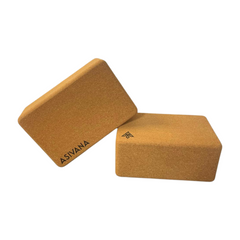What is Ashtanga Yoga?
Jack UtermoehlShare
Ashtanga yoga is a physically demanding and structured style of yoga designed to build strength, flexibility, and endurance.
Known for its vigorous flow, Ashtanga synchronizes breath with movement in a progressive series of postures, generating internal heat to detoxify the body and cultivate focus.
What sets Ashtanga apart is its systematic sequence of poses, performed in a specific order, creating a meditative rhythm. This disciplined approach not only enhances physical fitness but also fosters mental clarity and inner tranquility.
Sharath Jois, the grandson of Pattabhi Jois, dedicated his life to preserving the Ashtanga yoga tradition, contributing significantly to its global practice before his passing on November 11, 2024, at the age of 53.
Origins of Ashtanga Yoga
Ashtanga yoga was formalized by K. Pattabhi Jois in 1948, drawing inspiration from the teachings of his guru, T. Krishnamacharya, and the ancient text ‘Yoga Kurunta.’ This text emphasized the dynamic combination of breath, posture, and focus, forming the foundation of the Ashtanga practice.
Jois developed six progressive series of Ashtanga yoga to challenge practitioners at different levels of physical and spiritual growth.
The Primary Series focuses on detoxifying and healing the body, while subsequent series advance strength, flexibility, and mental discipline.
Related: Quotes of Pattabhi Jois
Ashtanga Yoga Practice
The practice of Ashtanga yoga follows a defined sequence of six series:
- Primary Series (Yoga Chikitsa): Detoxifies and aligns the body.
- Intermediate Series (Nadi Shodhana): Cleanses the nervous system.
- Advanced Series (Sthira Bhaga): Builds strength, stamina, and flexibility.
Each session begins with Sun Salutations (Surya Namaskar), progresses through standing, seated, and finishing sequences, and concludes with deep relaxation in Savasana.
Practitioners are encouraged to develop self-discipline through consistent practice.
Common Poses
- Sun Salutations (Surya Namaskar)
- Chakrasana (Wheel Pose)
- Finishing Poses: Including Shoulder Stand (Sarvangasana) and Headstand (Sirsasana).
Ashtanga Yoga Suitability
Experience Level: Advanced Practitioners
Physical Demand: Athletically Intense
Mind-Body Engagement: Physically Focused with Mindful Elements
Adaptability: Specialized or Restricted Adaptability
Focus Area: Flexibility & Balance to Strength & Endurance
Notes on Ashtanga Yoga
Ashtanga yoga enhances cardiovascular health, strengthens muscles, and increases flexibility while promoting mental focus and inner calm.
The structured and disciplined nature of the practice fosters personal growth and resilience, both on and off the mat.
Similar Styles
Hatha Yoga, Vinyasa Yoga, Hot Yoga, Power Yoga, Jivamukti Yoga
Equipment
Required: Yoga Mat
Nice to Have: Yoga Blocks, Yoga Strap
Optional: Yoga Blanket
Support your yoga journey with high-quality, sustainable props designed for comfort and stability.
Crafted from eco-friendly cork for durability and a comfortable practice. $24 Includes everything you need to get started: a mat, blocks, and a yoga strap. $120Yoga Essentials for Your Practice


References and Resources
‘Ashtanga Yoga: The Practice Manual’ by David Swenson
‘Yoga Mala’ by Sri K. Pattabhi Jois
‘Ashtanga Yoga: Practice and Philosophy’ by Gregor Maehle
‘The Power of Ashtanga Yoga’ by Kino MacGregor






